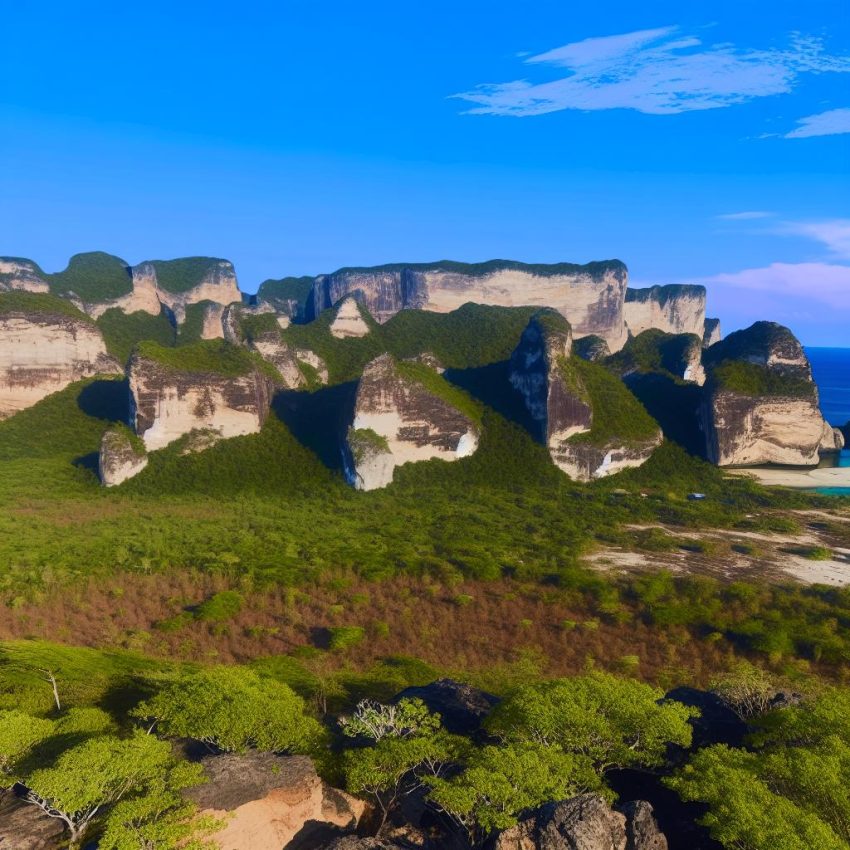Introduction to Monte León National Park
Monte León National Park is a significant natural reserve located in the southern region of Argentina, specifically within the province of Santa Cruz. Established in 2004, this expansive area includes a diverse coastal region along the Argentine Sea and is managed by the Argentine National Parks Administration. The park is renowned for its remarkable biodiversity, dramatic landscapes, and profound historical importance, which together create a unique environment for both conservation and exploration.
Geography and Climate
The geographical expanse of the park covers approximately 62,000 hectares, characterized by a varied landscape that blends cliffs, extensive sandy beaches, and open plains. This diversity in terrain aligns with the park’s more than 40 kilometers of coastline, providing breathtaking views of the sea. The climate is predominantly cold and semi-arid, a stark yet typical feature of the Patagonian region. Visitors to the park can expect strong winds, a common atmospheric trait here, alongside substantial temperature variations depending on the season. Summers offer mild and more comfortable temperatures, while winters can be significantly colder, creating a dynamic environment that reflects Patagonia’s distinctive weather patterns.
Flora and Fauna
Monte León National Park is a sanctuary supporting a rich array of flora and fauna. The park’s ecosystem sustains numerous plant species that have adapted to survive in the arid climatic conditions present within the region. Noteworthy elements of its plant life include Nothofagus forests, which are crucial to the local ecology, and a variety of hardy shrubs that thrive in the challenging environment.
Wildlife within Monte León is abundant and diverse, attracting nature lovers and ecologists alike. Among the notable species that inhabit the park are guanacos, a kind of camelid indigenous to South America, whose presence underscores the region’s rich biodiversity. Bird species are prolific in the area, enhancing the park’s reputation as a haven for birdwatchers. Populations of elephant seals and sea lions also frequent the coastal stretches, particularly visible during specific periods of the year.
Birdlife
The avian population in Monte León National Park is particularly significant, drawing birdwatchers from around the world. The park provides refuge to a wide range of bird species. Commonly sighted birds include the Imperial shag, known for its distinct appearance, and kelp gulls, which populate the coastal regions. Oystercatchers, with their striking coloration, add to the diversity of the birdlife observed here. A centerpiece of the park’s avian biodiversity is the Magellanic penguin colony, attracting both researchers and tourists interested in observing these charismatic birds in their natural habitat.
Human History and Cultural Significance
The land that now comprises Monte León has a storied human history, with archaeological evidence pointing to the presence of indigenous peoples dating back thousands of years. Various archaeological sites dispersed across the park provide a glimpse into the lives of these ancient cultures, evidencing their adaptation to the environment and interaction with it over millennia.
Subsequent to indigenous habitation, the area saw influences from European explorers and settlers, contributing to a complex cultural tapestry that is still discernible today. The mingling of different historical influences has left a distinct mark on the region’s cultural heritage, making Monte León a site of interest for historians as well as nature enthusiasts.
Conservation and Research Efforts
Conservation efforts at Monte León National Park are earnest and ongoing, aimed at safeguarding both its natural ecosystems and cultural treasures. Projects within the park focus on restoring natural habitats, protecting endangered species, and mitigating human-induced impacts on the environment. The park also functions as a critical research hub, where scientists conduct studies to better understand the ecology and wildlife inherent to this region, fostering a better comprehension of its natural processes and how best to preserve them for future generations.
Visitor Information
Monte León National Park welcomes visitors throughout the year, with peak visitation occurring during the austral summer months from December to March, when conditions are generally more favorable. The park features a range of recreational activities suitable for outdoor enthusiasts, including hiking on designated trails, birdwatching, and observing marine animals along the coast. Facilities within the park are designed to enhance visitor experience and include well-marked trails and informative signage that guides exploration.
Visitors are encouraged to respect established guidelines designed to minimize environmental impact, promoting a model of responsible tourism crucial for the continued preservation of Monte León’s exceptional natural resources. For up-to-date visitor information, including details on park conditions and specific regulations, interested individuals should reach out to the National Parks Administration of Argentina, which provides comprehensive resources for planning visits.
Conclusion
Monte León National Park represents a vital segment of Argentina’s efforts to preserve its natural and cultural heritage. The park showcases the unique landscapes and rich biodiversity that characterize Patagonia, providing a habitat for a myriad array of wildlife and an environment for meaningful ecological research. The ongoing conservation initiatives are essential to maintaining both the ecological balance and historical legacy of this extraordinary reserve, ensuring that it remains a source of inspiration and learning for generations to come.

